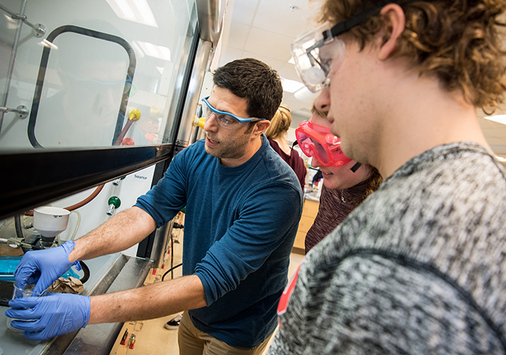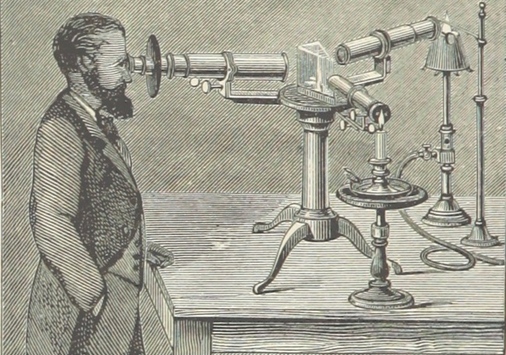In-classroom Support
Strategies to Enhance Student Learning and Academic Achievement
Individual faculty (non-tenured or tenured) may request that the director of the Center for Learning and Teaching observe one or more classroom meetings, followed by discussion and feedback. Some discussion topics may include teaching behaviors, faculty/student interactions, classroom environment, and other learning and teaching questions. The process typically includes the following steps:
- Contact the Center for Learning and Teaching for information about the observation process.
- Meet with the Center’s director before any observations take place to discuss one of more of the following topics: course(s) to be observed, prior teaching experiences, teaching goals or concerns, course materials including the syllabus, assignments, or exams, and student course evaluations.
- Two or three consecutive class meetings will be chosen for observation.
- Following the final observation, the Center’s director will write a detailed report that includes: a) a descriptive record of the instructor’s and students’ behaviors during the class sessions, b) constructive feedback consisting of comments and reactions to specific teaching and learning processes, c) questions for the instructor to consider, and d) a summary of teaching strengths and concerns along with suggestions or recommendations.
- After you have had time to read and reflect on the report, a follow-up conversation(s) will be held.
All observations are confidential unless the colleague wishes to involve other colleagues.
The Center for Learning and Teaching is available for one-on-one conversations or consultations with individual faculty members at all stages of professional development and experience. They are voluntary and confidential, and they can address a range of goals, topics, or concerns related to student learning and teaching effectiveness. These discussions could focus on, for example:
Course and syllabus design
- Classroom learning environments
- Course-related materials and activities
- Student motivation, exams and other methods of assessing learning
- Use of student mid-semester formative evaluations
- Interpretation of students’ course evaluations
- Digital technology
These conversations and consultations are meant to provide a supportive and collaborative relationship that a colleague can draw upon as they develop or extend their teaching skills and approaches. For that reason, our relationship complements other formative evaluation procedures and faculty development programs, and are completely independent of any summative evaluation of teaching effectiveness. All conversations and consultations are confidential unless the colleague wishes to involve other colleagues.
“Formative peer review of teaching is focused on the long-term enhancement of teaching and learning. Even when mandatory, the process should be primarily driven and guided by the faculty member’s personal goals, by feedback from students and/or colleagues, and/or by a desire to address problems in a specific course or academic context” (Smith, 2014).
Faculty development scholarship has addressed the different purposes, procedures, and responsibilities that distinguish formative from summative evaluation of teaching. As the first quote illustrates, formative evaluation focuses on the improvement of teaching. In contrast, summative evaluation leads to a judgment of teaching effectiveness use for merit, tenure, or promotion decisions.
Peers play an essential role in the formative evaluation process and peer observation of classroom teaching is a primary component of the process:
“Peer observation of teaching provides a structured framework for the ongoing improvement of teaching and learning practices through peer collaboration and discussion. Observation is a valuable tool for both the observed and the observer as it is about the sharing of excellence, the promotion of a greater sense of collegiality, dissemination of good practice, individual development, and improving the quality of student learning” (Macquarie University, 2010).
Peer observation is a mandatory component of both formative and summative evaluation of teaching at Denison and the required procedures and actions are described in the Faculty Handbook. The final report produced by Denison Task Force on the Evaluation of Teaching Effectiveness and Student Learning (TESL) includes the comment that:
“Peers … serve as potential experts- both in the subject matter as well as in the pedagogy of the discipline. As such, peer evaluators provide an important, seasoned, collegial perspective on the instructional goals, methods, and environment. Though our peers may be subject matter experts in their discipline, they may need training in how to conduct peer evaluation” (p. 78).
The materials and resources collected here are meant to provide support for Denison faculty who participate in peer observation of teaching - either as the observed or as the observer - and for academic departments and programs engaged in developing and conducting classroom observations required for formative peer review of teaching.
The President’s Office and The Center for Learning and Teaching sponsored a one-day workshop for Denison Faculty on May 17, 2016. The workshop was led by Dr. Kenn Barron, a social psychologist at James Madison University and co-director of the Motivation Research Institute at JMU. Dr. Barron is recognized nationally for his major contributions to the theoretical development of this field and for his research that applies and tests specific educational strategies and programs targeting the role of motivation in learning, academic achievement, self-efficacy, goal determination, and college student persistence and success.
During the workshop, Dr. Barron presented a single, unifying motivation theory to help faculty understand the major sources of students’ motivation, and demonstrated how faculty can use this information to design courses and to develop effective teaching strategies in order to promote each source of motivation.
The main components of Barron’s model are shown below and the complete model with examples of the multiple factors that underlie each component are contained in a handout that can be directly applied to influence your students’ motivation. As you consider the factors that underlie your students’ motivation to learn, ask yourself:
- What are some research-based sources of increasing my students’ expectancy that they can learn or do a task? Consider: effort, feedback, goal setting, clear expectations, etc.
- What are the sources of increasing the value of learning or doing a task? Consider: intrinsic and extrinsic interest, relevance, novelty, personal control and choice, etc.
- What are evidence-based ways of decreasing students’ costs in learning environments? Consider: effort, time, emotional reactions, loss of alternative valued activities, competing activities, etc.
|
M = Motivation |
||
|
E = Expectancy |
→ |
Can your students do the task? |
|
V = Value |
→ |
Do your students want to do the task? |
|
C = Cost |
→ |
Do your students have barriers preventing them from investing time, energy, or resources into the task? |
Additional materials from the workshop and resources on the research literature on motivation and learning can be found in the Center’s MyDenison pages (“Student Motivation and Learning Workshop, Kenn Barron, JMU”).
Mid-semester course evaluations are a valuable resource for improving student learning, enhancing teaching effectiveness, and fostering a positive classroom learning environment. Unlike course evaluations completed at the end of the semester, feedback from students obtained at one or more times during the semester can lead to significant learning and teaching changes for both students and instructors while the course is still in progress. The purposes of gathering informal feedback from students during the semester are:
- To allow you to address student misconceptions or learning difficulties
- To make changes to the course schedule, assignments, or other activities, if necessary
- To communicate to students that you care about their perspectives on the course, their engagement and learning, and your teaching
- To provide an opportunity for students to reflect on their expectations, efforts, and learning
- To reflect on your own teaching goals, activities, and interactions with students.
Mid-semester course evaluation is an example of formative evaluation of teaching, where the primary goal is to use student feedback as one source of information for developing teaching skills and effectiveness. Unlike end-of-semester course evaluations, which are standardized across the college and contribute to summative evaluation of teaching, the mid-semester evaluations are designed solely for your own use in making changes during the semester (and in revising courses for future semesters).
Mid-semester course evaluations are not a required component of formative evaluation procedures at Denison and are used inconsistently across the college, according to information presented in the Final Report (February 2015) of the Task Force on Teaching Effectiveness and Student Evaluation (TESL). However, the TESL report “recommends that mid-term evaluations be a part of the classroom experience at Denison. Students value mid-term evaluations but also emphasize their desire to see changes in the course based on their input. The changes are a sign of their involvement and agency in the course’s unfolding” (p. 86).
Denison’s Center for Learning and Teaching can provide resources, guidance, and consultation on the development and use of mid-semester evaluations by individual faculty as well as academic departments or other faculty mentoring groups. As in all Center-related programs, the emphasis will be on formative evaluation and faculty development.
Using mid-term evaluations as part of a formative evaluation of teaching is a 3-step process:
- Designing the Evaluation Questionnaire
- Administering the Evaluation
- Responding to Students’ Comments








